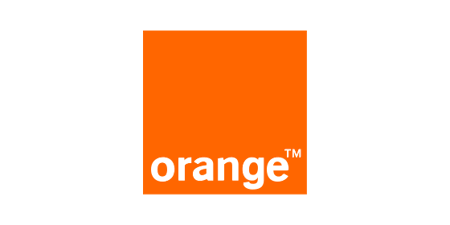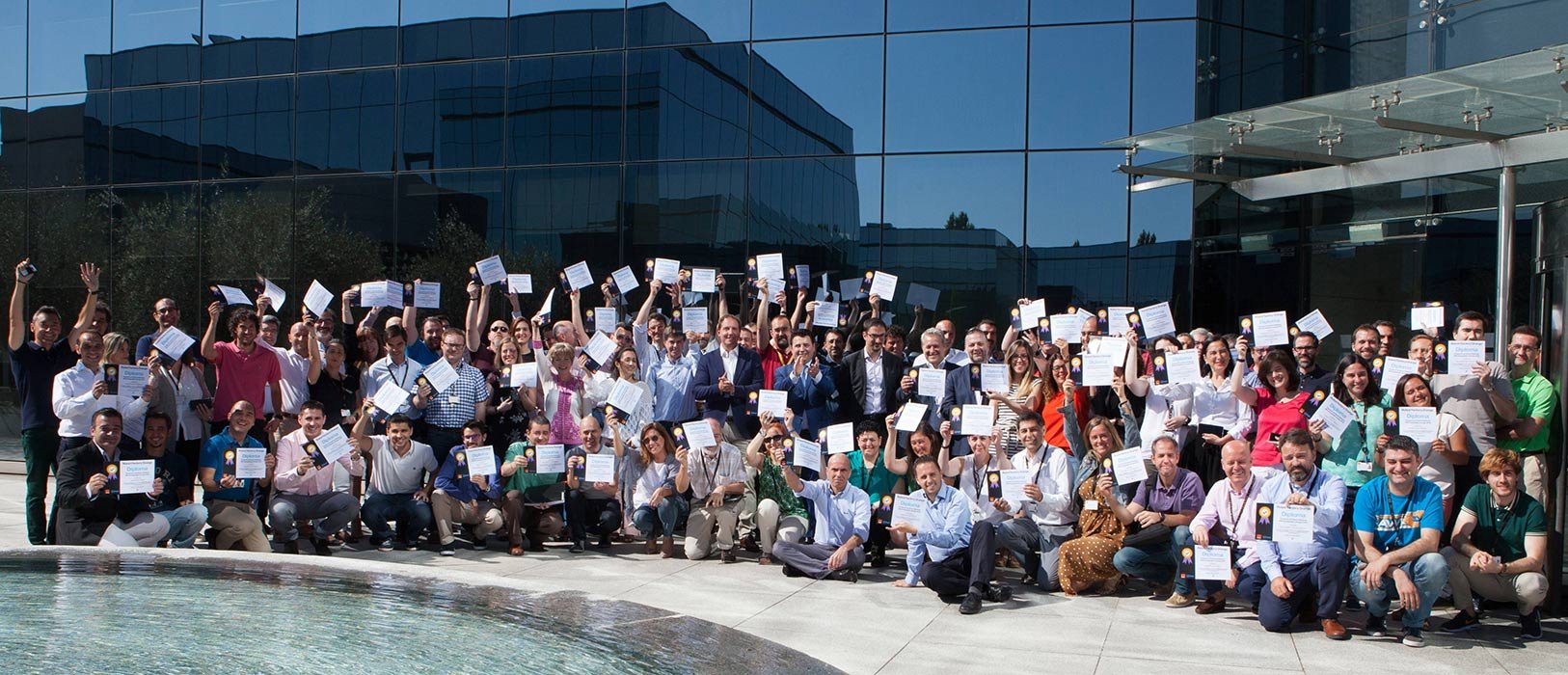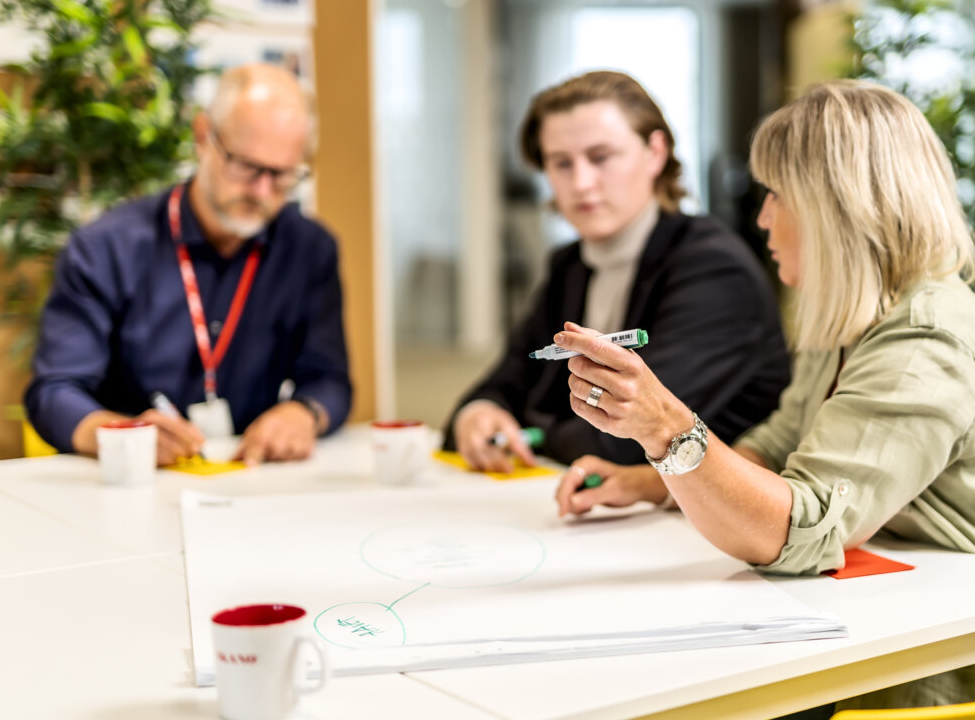
Client:Orange Spain
Industry:Telecommunications
Region:Europe
Contact Center
The Orange Robot Factory leverages RPA to fulfill CEO’s vision for business transformation

400+
robots created and deployed since Q4 2017
24/7
fast and efficient customer service provided by software robot ecosystems working together
100
strong multidisciplinary teams in Robot Factory
Over €34 million
in savings in a little over 2 years
250
employees trained in RPA with the UiPath Academy
Client Overview
Orange Spain is the Spanish subsidiary of the French multinational telecoms company. Launched as a commercial brand in Spain in 2006, the operator offers telephone, internet and IPTV services and is currently the second largest operator in the country for mobile telephone services, and the third largest in fixed telephone services. With the CEO’s full support, the Orange Robot Factory was created in 2017 to drive increased efficiency and customer satisfaction across the organization with RPA.
Spanish subsidiary of the leading French telco operator Orange leads the way with the creation of a Robot Factory that uses the UiPath Business Automation Platform to generate millions of euros of savings for the company. All while transforming the way they do business and enrolling the entire staff in the automation initiative.
When Laurent Paillasot was appointed CEO of Orange Spain in 2016, he set in motion an enterprise-wide transformation of the way the company operated which has successfully driven growth in the business. Growth to the point that it has, on occasion, overtaken even the Orange parent company in France. His strategy and vision for the company was based on three tenets: that it should become a digital (yet at the same time a human-centric) company, where agility and flexibility are fostered, and where not only is teamwork encouraged, but also individual talent is maximized.
Robotic process automation (RPA) was viewed as a technology that wasn’t simply a means to optimize operations, but that could be a key enabler to achieve these tenets across the organization. The democratic nature of the steps required to create a software robot, as enshrined in the UiPath 'automation first' philosophy, dovetailed perfectly into Paillasot’s three principles. A technology for the digitalization of the business that improves the work environment for employees, driving agility and flexibility in the company’s operations, and one that can be built by multidisciplinary teams to allow individuals to use their creative talent and add value to the business.

With this in mind, he gave his total backing to the creation of what was to become known as the Orange Robot Factory, headed by Javier Castellanos. The Robot Factory is a business within the business, dedicated to the automating internal processes so that employees can provide greater value to Orange’s customers. His support was crucial for the success of the initiative, says Castellanos, because “we at Orange were much braver than others at the start. We see companies that test and automate a couple of processes as pilot projects over a year or more, whereas we went all out, setting ourselves the target to create and operationalize one robot per week. And the results spoke for themselves: within the first six months of activity of the Orange Robot Factory, more than two million interactions in the company were already done by robots.”
The first use cases helped us a lot to gain credibility within the company once the whole organization could see for itself that we could offer fast deployment, quick returns on investment, and immediate reductions in costs.
Javier Castellanos • Head of Orange Robot Factory
Orange was 100% certain they wanted to work with UiPath as their main automation provider. The range of easy-to-use and highly visual products that don’t require high levels of technical expertise to understand allowed them to democratize the automation process. And enabled them to define an operating model for the Robot Factory where employees can ask for a software robot and participate in the robot development.
The Robot Factory
Launched in Q4 of 2017, the Orange Robot Factory began by going through the same learning and growth curve as any ‘startup’ business would. The Robot Factory started with a team of just 13 people from various business units (not just IT). Since then it's grown to 100 strong and has created over 400 robots across the company. They've also installed 'RPA ambassadors' in all departments. Amassadors provide the team direct contact with every area to uncover new automation opportunities. Most of the team comes from inside Orange because, as Castellanos said, “the knowledge has to be internal.”
“The company could have hired some consultants or brought in people from external providers to the organization,” he added. “But instead of doing that, Orange has ‘drawn from the bench,' opting to incorporate only a few very specific profiles from outside.”
The emphasis on training employees in RPA has been fundamental to the success of the initiative—on the one hand to reduce fear of the technology but also to motivate staff to change the way they operate the business.
Javier Castellanos • Head of Orange Robot Factory
Orange’s automation journey started with the first robot deployment for a member of the Quality Control department, a qualified telecoms engineer. The engineer was having to spend an hour and a half per day launching and processing client satisfaction surveys after they had had fiber optic internet connections installed in their homes and businesses. That time each day equated to two months a year dedicated to a monotonous and repetitive task that was ripe for automation, according to Castellanos’ calculations.
The process involved obtaining three different reports from two systems, aligning the data in several different Microsoft Excel sheets, and preparing an individual URL in order to send surveys to customers via SMS, and putting the file on the File Transfer Protocol (FTP) for clients to access and fill in. The laborious and time-consuming tasks were way below the employee’s level of technical knowledge as a telco engineer. Now, the robot completes the task in just two minutes, and the employee has time to review clients' responses, understand the process better, and make suggestions for improvements.
“This was the kind of use case we were looking for and an example of the changes we wanted to implement on the staff,” said Castellanos. “There was concern at the start among employees that robots would be ‘stealing their jobs’ and they would be laid off. So, our internal communication plan was critical to addressing these concerns. We made a video about this first robot deployment and how it helped the employee. And we showed it to the whole organization, highlighting clearly how software robots can help individuals be free from doing these kinds of tasks, allowing them to perform higher-value work that leverages their own talent.”
We were much braver than other companies that test and automate a couple of processes as pilot projects over a year or more. We went all out, setting ourselves the target to create and operationalize one robot per week. And the results spoke for themselves: within the first six months of activity of the Orange Robot Factory, more than two million interactions in the company were already done by robots.
Javier Castellanos • Head of Orange Robot Factory
Shortly after that, Castellanos and his team went to the controllers of two different business areas within Orange, Finance and Operations. They explained how they could deploy robots quickly and easily to automate certain key departmental tasks. They also showed how the robots could help reduce operational costs for that department by up to 80% in the first month. Within less than three months from its launch, the Factory had automated 17 different processes, bringing together the technical expertise of the team and input from the different departments involved.
“These use cases helped us a lot to gain credibility within the company, once the whole organization could see for itself that we could offer fast deployment, quick returns on investment and immediate reductions in costs,” said Castellanos.
As with any business, the Orange Robot Factory has key performance indicators (KPIs). The bottom line is that it must save Orange money. Its core business is not automating for the sake of automating internal processes; Orange wasn’t looking to replace staff with robots. However, if staff levels remain the same while the number of robots increases, it becomes an expense for the company, with the cost of the servers, hardware, software licenses, and developers. And that is not the path to real savings.
So, right from the beginning, the approach was that if a business area wanted to automate a process without a clear business case, the Factory wouldn't create the robots. The employees should learn how to use UiPath robots by obtaining the official RPA certification through UiPath Academy, and they are expected to create their own robots with the help of the Factory. The Factory’s focus is exclusively on reducing capital expenditure (CapEx) and operational expenditure (OpEx) for the organization. In the little over two years it has been in existence, Castellanos calculated it has saved Orange Spain more than 34 million euros.
We have a wealth of talent in the company and the robots are allowing us to bring this out and leverage it, by freeing us from those tasks that we all know have to be done but do not satisfy us either personally or professionally.
Javier Castellanos • Head of Orange Robot Factory
This emphasis on training employees in automation has been fundamental to the success of the initiative—both by reducing fear of the technology, but also motivating staff to change the way they operate the business. Orange is the only company in Spain to have launched a training program on robotics for all its employees. To date, 250 employees have received the UiPath Certification following the successful completion of the UiPath Academy 50-hour course on RPA. The objective was clear—to engage the workforce in the company’s overall strategy for automation and help them reskill and learn to use the technology. This way, they can continue their function in the business, working alongside software robots (which they will have developed to improve their own work environment).
Another key factor for the Robot Factory's success was the launch of an internal website where employees can suggest automation and all parties involved can track progress in real time. Before the site, employees exchanged thousands of phone calls, emails, and Microsfot Excel sheets to request automations and track the progress of those requests.
The internal site provides a single point of contact and interface where requests for robots can be launched, various stages of the robot creation process can be tracked, and the robots' work can be tracked for performance (and in case of incidents). Every controller has his or her own private area on the site where they can observe, in real time, the savings achieved by all the robots in their area.
Best-in-class customer service
Of the 400 robots currently running in the organization, only a small percentage are considered mission critical. “Not all robots are created equal,” said Castellanos. “And as you add one robot to another, and then another, you create an ecosystem where various robots are interacting together and become interdependent on each other." One such ecosystem, of which Castellanos is particularly proud, operates in technical support, a vitally important function that directly impacts the quality of client experience.
It consists of 31 robots all working together to resolve technical incidents. A simple call to the customer service call center will trigger the diagnostics, escalations, testing, and documentation necessary to resolve the incident. All processes are managed by robots, from sending a replacement router to booking a call-out appointment with a technician. This enables Orange to provide a truly 24/7 customer service in real time while generating enormous savings from the operations side.
The future
The Robot Factory’s work is far from over. Javier Castellanos highlighted the need to evolve now that RPA deployment in the organization is approaching maturity.
“We have to develop new steps. For example, we are currently learning how to join business process management (BPM) with RPA in order to tackle other types of processes. There are many within the company which are highly complex, such as the monthly crossing of invoices with Netflix (which we offer to our customers), and it’s not enough to just put in a robot and that’s it,” he added. One of the Factory’s objectives for 2020 is to put into place a web environment around this process that involves many people and detects which steps can or need to be automated.
Castellano’s team also wants to accelerate more transactions within their artificial intelligence (AI) division this year.
Orange is the only telco operator in Spain that offers customer service via WhatsApp connected to their virtual assistant Djingo. They also have Djingo connected with Google Home, where customers can ask direct questions about tariffs or query invoices. Such transactions require a lot of robots. So the Factory has built an API that connects robots to every front in the company so that customers, call center agents, sales staff, or any other relevant employee can all use the same robot at the same time.
Orange believes in RPA. The top-down support for the Robot Factory—combined with the positive perception the staff have of the technology across the entire enterprise—is proof of that belief.
“In Orange, RPA means a golden opportunity in our development. It is becoming a thing of the past to see highly qualified engineers, with incredible business knowledge, wasting five hours a week cross referencing Excel sheets. That's what this is all about. We have a wealth of talent in the company and the robots are allowing us to bring this out and leverage it, by freeing us from those tasks that we all know have to be done but do not satisfy us either personally or professionally," explained Castellanos.
Related case studies
Ready for your own case study?
Speak to our team of knowledgeable experts and learn how you can benefit from agentic automation.






